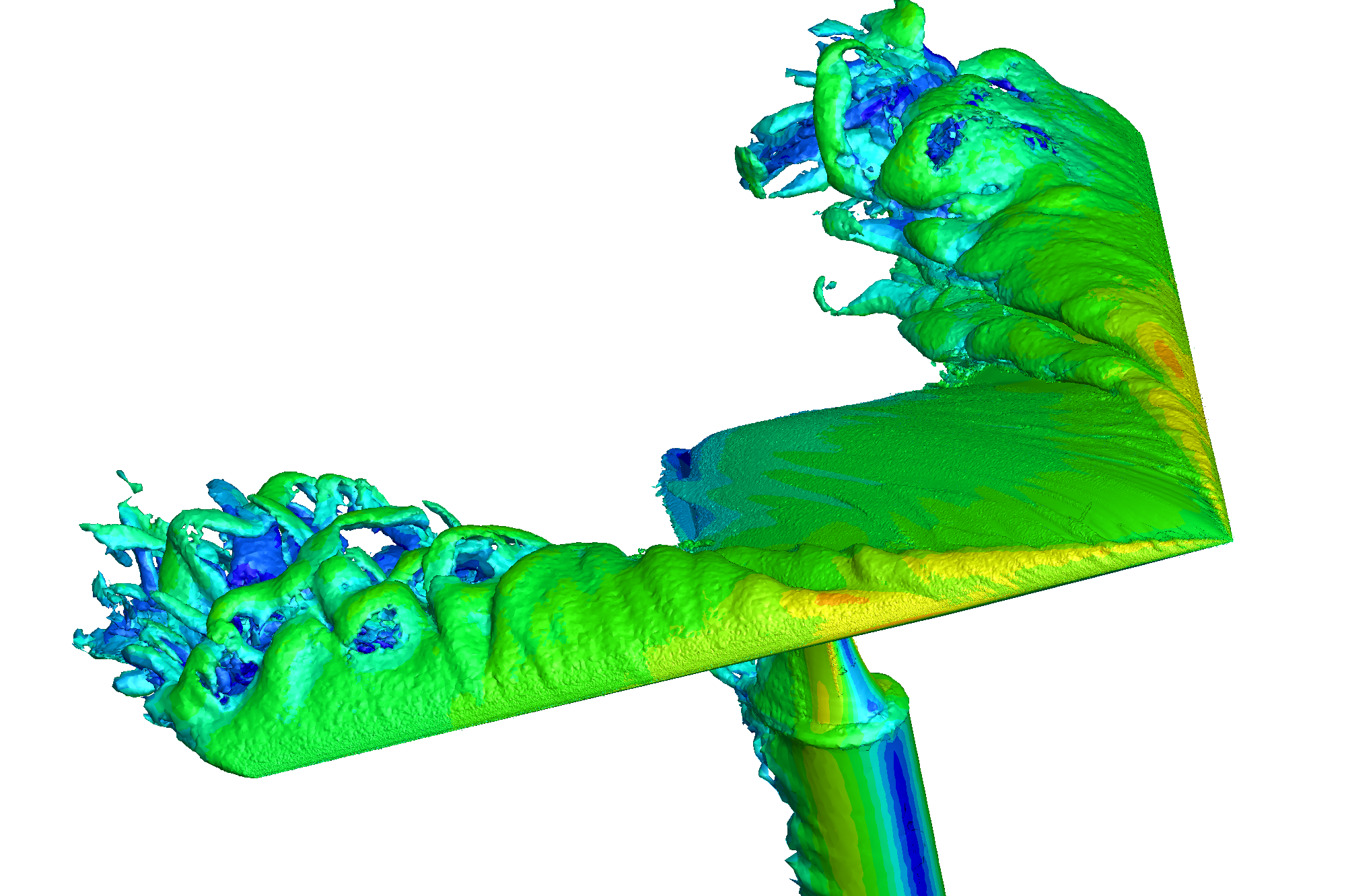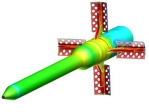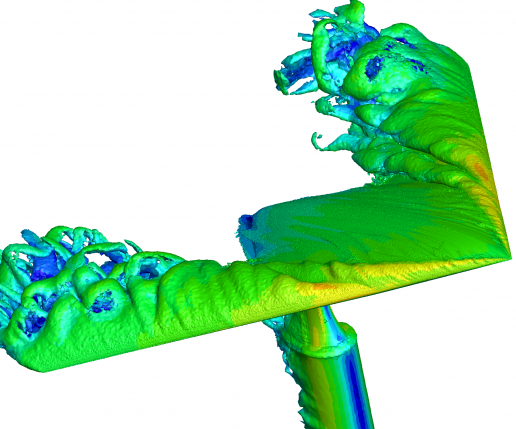The Argus Missile is a ground penetrating sensor device that is dropped from an aircraft. The streamlined missile deploys 4 paddles to slow and stabilize on its descent. A computational analysis of this action is challenging due to the tight gaps between the folded paddles and missile body, the deployment action, and the motion of the sliding locking ring.Continue reading
Author Archives: cobalt_admin
Wing Aileron Flap
A test case of the F-15 wing, aileron and flap was used to demonstrate the application of the Cobalt v7.0 Overset Module to moving control surfaces. In this type of application, the motion is prescribed and the limits of the grid motion are known ahead of time. There is also a very tight space between the control surfaces and the wing where the code must create a good hole-cut throughout the motion cycle. This geometry also presents the overlap of three grids at the intersection of the wing, aileron, and flap. All these qualities combine to present a realistic application to be able to simulate.Continue reading
Prediction and Validation of Aerodynamic Characteristics for a Generic UCAV Configuration with Trailing-Edge Flaps

Illustrating the vortex dominated flow over the SACCON at an angle of attack of 16 degrees. DDES-SARC turbulence model used. Isosurface of vorticity magnitude shown colored by velocity magnitude.
UCAVs present significant nonlinear aerodynamic characteristics with respect to angle of attack, control surface deflections and frequency of motion even at low angles of attack, which makes the task of predicting the aerodynamic characteristics very complicated. This application focuses on using Cobalt to predict and validate the aerodynamic static and dynamic forces on the Stability and Control Configuration (SACCON) uninhabitated combat air vehicle (UCAV) geometry with the addition of two trailing edge control surfaces on each wing. The work primarily looks at the effects of angle of attack for the control surfaces both undeflected and deflected, and the effects of sideslip and dynamic pitch and yaw motions for the control surfaces undeflected.Continue reading
Stability and Control Characteristics of High Performance Aircraft

A-10 aircraft with centerline fuel tank used in System Identification (SID) of CFD. Isosurface of vorticity.
The motivation for this work is to initially use CFD so that flight test and wind tunnel resources can be applied where they are needed the most. The combination of Cobalt with the resources of High Performance Computation program of the DoD allow for more in-depth simulations and quick turnaround. This work is a good step toward the end goal of ‘flying’ an aircraft using Cobalt.
During this work, the A-10 with centerline fuel tank was simulated in order to compare CFD and SID of CFD versus wind tunnel. Developing a SID model can be done in minutes and once validated, it can Continue reading
Optimizing Extraction Parachute Operational Parameters
A current area of interest in the US Army operational and test community is the application of aerial delivery at high speed and at relatively low altitudes. The High-Speed Container Delivery System (HSCDS) is such a program intended to address this type of operational need. In conjunction with this program, a series of simulations have been conducted that attempted to cover a parameter space of operational variables such as aircraft type, aircraft flight speed, extraction line length, and drogue parachute design and size. The objective here is that with validated and verified modeling and simulation results anchored to actual flight test data, future exploratory test and development work may be performed with increased reliance on information derived from modeling and simulation with potential savings in the use of airdrop assets.Continue reading
Welcome!
Welcome to our redesigned website. Please excuse the mess as we complete the overhaul.
Stability and Control work Featured on DoD HPC website
Work being done at Eglin Air Force Base using Cobalt to improve the test and evaluation process of fighter aircraft is featured in an article on the Department of Defense High Performance Computing Modernization Program website. Click here to go for the paper. It is also featured in our Applications Section Click here to go to the application.










